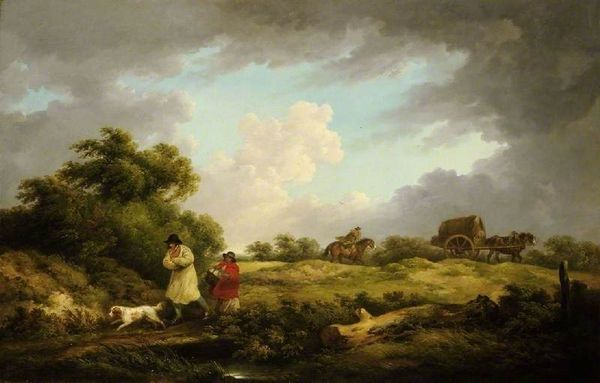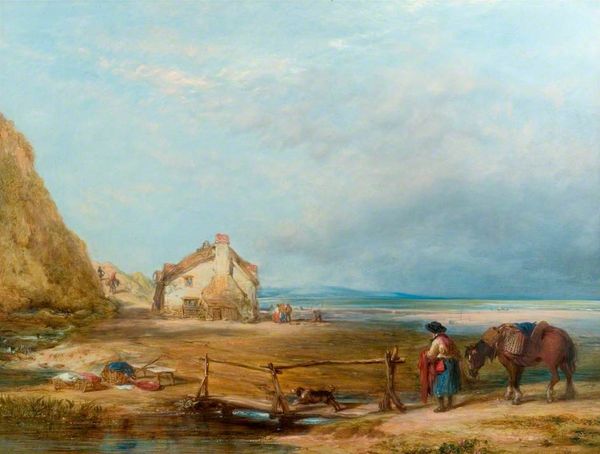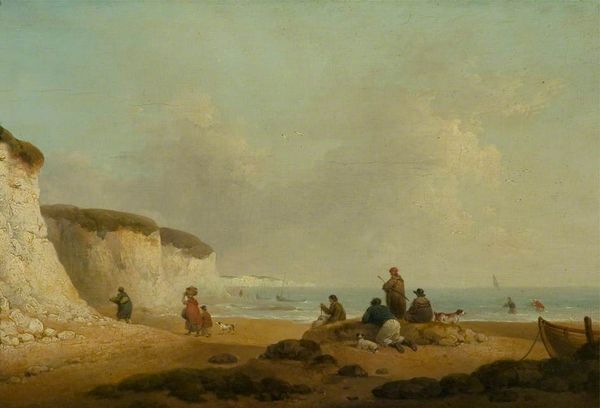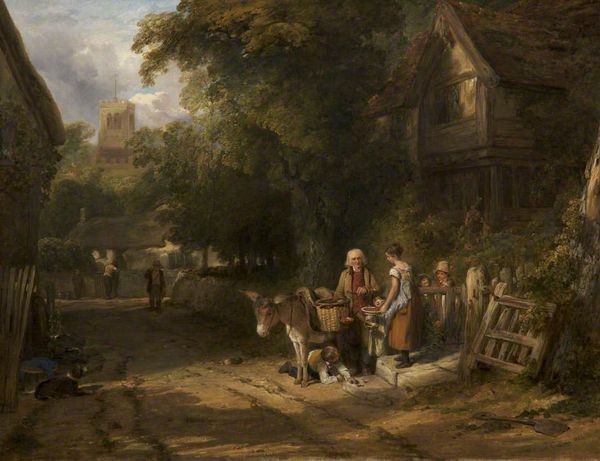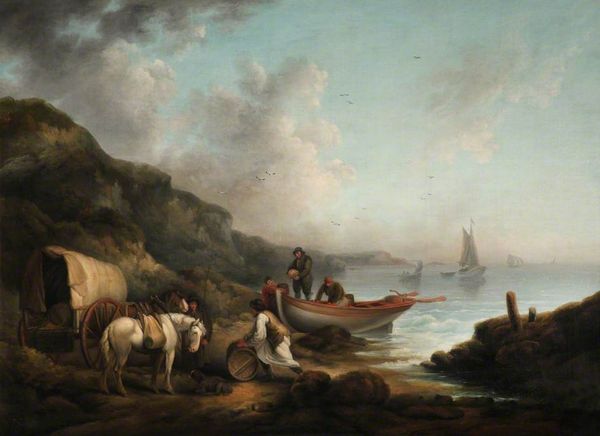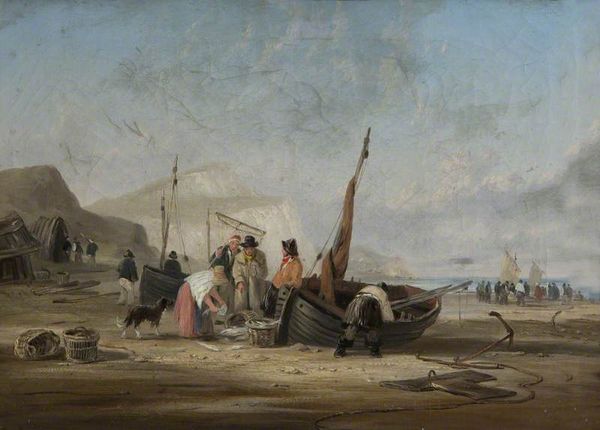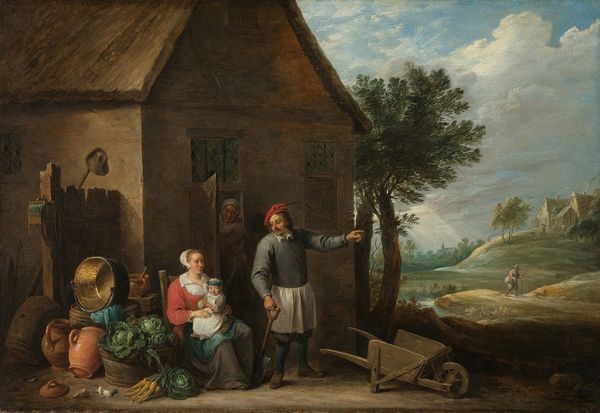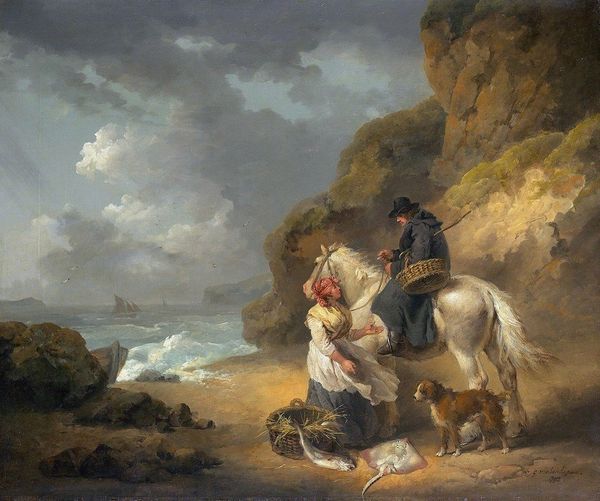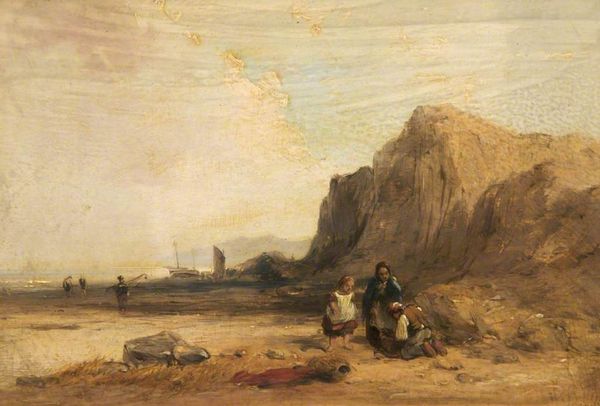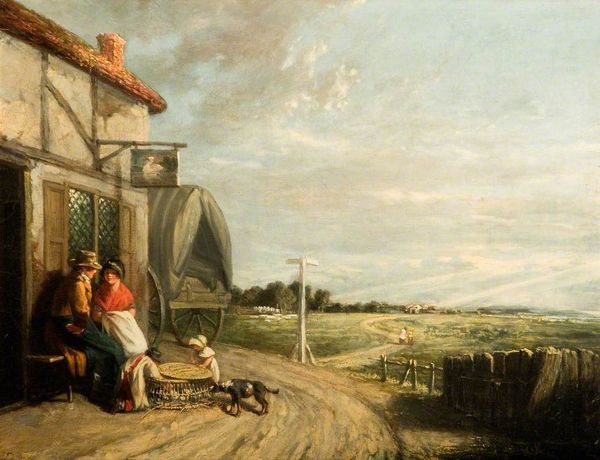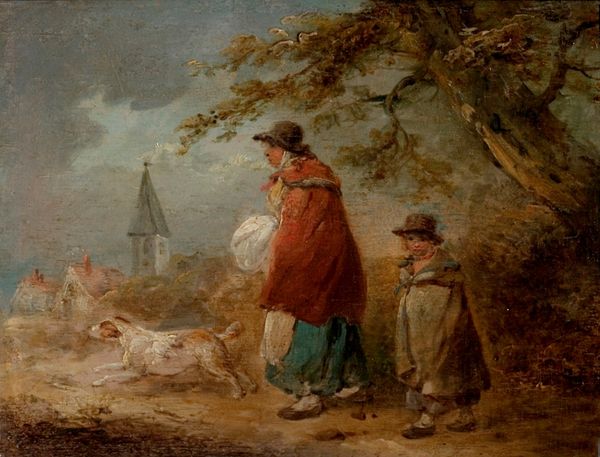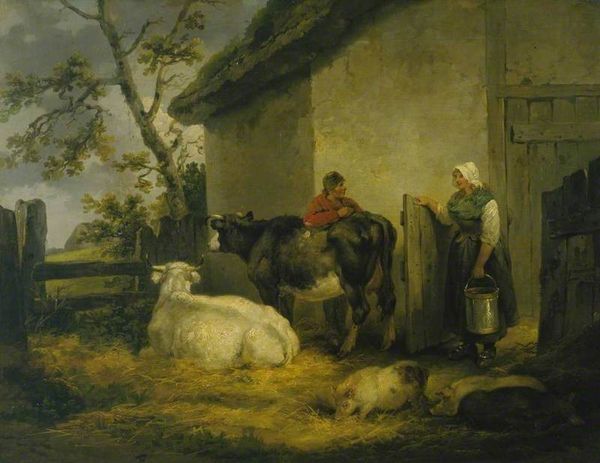
painting, oil-paint
#
narrative-art
#
painting
#
oil-paint
#
landscape
#
figuration
#
oil painting
#
romanticism
#
genre-painting
Copyright: Public domain
Curator: Welcome. Here we have William Collins's "The Mariner's Widow," painted in 1835. Collins, known for his genre scenes and coastal landscapes, captures a poignant moment in this oil painting. Editor: The sheer stillness is striking. A solemn mood permeates everything – the muted colors, the grief etched on the faces. Even the dog seems subdued. Curator: Indeed. It’s a fascinating tableau reflecting the precariousness of life tied to the sea. You see the widow, dressed in black, pointing towards the horizon, perhaps at a returning ship. Around her, we find varied reactions to the possibility, or probability, of disaster. Editor: The composition really underlines the intersectional realities. We’re shown gendered anxieties—notice how it is only women exhibiting raw grief. They depend on men going to sea for survival, making them vulnerable and disempowered when a husband is lost. The social structure dictates their fates. Curator: Precisely. This artwork operates on a social level, showing not only individual loss but also how such events ripple through the community. There's a man attempting to comfort the red-headed child and, just behind, we notice another man observing solemnly. It portrays collective endurance, echoing across coastal villages. Editor: Thinking about contemporary resonance, Collins makes a potent observation of societal inequality. Maritime labor's human cost persists, if in somewhat changed form; economic disparities continue to impact communities unevenly. What resources were accessible for seafaring families, in particular, that enabled survival or worsened tragedy? Curator: Historical records show charities played an essential role, but support would have depended greatly on location, resources, and societal biases during that period. Artists during the Romantic Era engaged heavily with societal themes through landscape as well as genre paintings, bringing these subjects more visibly into the public eye. Editor: Thank you for highlighting this artwork. Considering both aesthetic decisions and social implications allows one to consider, really, the social and historical forces shaping art. Curator: A necessary contextual consideration that lets us reflect not only upon Collins' vision, but the lives represented within the scene as well.
Comments
No comments
Be the first to comment and join the conversation on the ultimate creative platform.
